10 Best Moves for Mass
 |
| 10 Best Moves for Mass |
In your mission to fabricate the body of a mammoth, one ability is a higher priority than a particular device: the capacity to pick the correct exercise to take care of business. Regardless of whether you train in your carport with a corroded hand weight or at a five star office with a great many columns of comfortable situated machines, you have endless lifting weights activities to browse. In any case, let's face it — in the excellent pecking order of mass-building systems, just a picked not many are so viable in pressing on mass that about each fruitful muscle head and powerlifter has utilized them broadly — and some solely — during a mass-building stage.
To manufacture your body to its greatest potential, you have to center your insufficient time and vitality on the best methods for including muscle, and the perfect developments for development, which include numerous joints, actuate most extreme muscle strands and have ideal influences to consider overwhelming burdens. We've winnowed the rundown down to 10 essential mass manufacturers that meet these prerequisites, and every ha stood the trial of time. These basic mass-building developments are partitioned into four classes: chest area pushes, chest area pulls, lower-body pushes and lower-body pulls. In the event that you will probably pack on crude bulk, you'd be very much encouraged to concentrate on expanding your quality on these 10 developments, every one of which ought to be performed first on your bodypart-explicit preparing days.
Chest area Pushes
On the off chance that there's one action lifters love, it's a decent chest area push day. From sidelining substantial on the main day of each preparation cycle to searing their delts with unlimited arrangements of overhead presses, scarcely any weight lifters disregard to work their chests, bears and tri's. Be that as it may, the entirety of this consideration regarding these sea shore cordial muscle gatherings can have a drawback: Overdoing them can prompt genuine damage — especially in the delts, which assume a significant job in each pushing development. To amplify your development while protecting yourself from a baffling mishap, study up on the right method to perform and join four key chest area staples: the seat press, slant press, military press and weighted plunge.
Chest area Pulls
With chest area pushes like the adored seat press sitting first column focus in many schedules, chest area pulling developments, which focus on the lats, traps and center back — you know, the muscle bunches you can't find in the mirror without extending your neck — again and again take a rearward sitting arrangement. The twisted around free weight push and weighted jawline up stand apart from the pack with regards to rapidly pressing on pieces of meat on the upper back. Make them a need in your daily schedule, and you'll never wish it were chest day again.
Lower-Body Pushes
There's no chance to get around it — legs day sucks. Leg practices drive you to lift the most weight through the longest scope of movement, and the sheer mercilessness of all that difficult work is dominated by the way that the best lower-body push moves put you in the dubious one-bogus move-and-you're-toast position of having a top-stacked spine. However, disregard these demonstrated mass manufacturers at your own hazard. Scarcely any different developments will discharge a similar flood of development actuating hormones, and assemble a similar establishment to round out your chest area musculature. So, without the squat and front squat — you weren't searching for a machine move here, would you say you were? — you can kiss the muscle-boosting advantages of your valuable sidelining, squeezing and paddling farewell.
Lower-Body Pulls
The deadlift, alongside its hindered cousin, the rack pull, is in steady dispute with the previously mentioned squat for being delegated the lord of every single mass manufacturer — and in light of current circumstances. Both lower-body pulls work almost every muscle in your destined to-be-brutal body, and both send anabolic hormones coursing through your circulation system like Walmart bargain searchers on Black Friday. Be that as it may, the deadlift may have an edge: Its shorter scope of movement and lower-stacking position make for a kinder, gentler lower-body ambush. Its solitary issue? Numerous disconnection fixated lifters avoid this demonstrated powerhouse since it can't be flawlessly bundled in a bodypart-explicit box. In any case, know this: The deadlift and its varieties have helped pack unbelievable leg mass on working out's most-renowned physical make-ups, and no lower-body surge is finished without them.
1. Bench Press:-
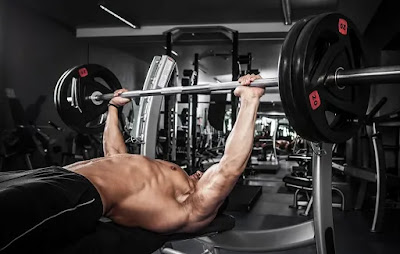 |
| Bench Press |
Target: Pectoralis major, front deltoids, triceps
Sets and Reps: 3–4 arrangements of 6–10 reps
Made for Mass:
Change the Technique: For most extreme pec enactment, overlook angling your lower back to abbreviate the scope of movement and press in a more grounded plane. Rather, take a somewhat more extensive hold, flare your elbows out to your sides and lower the bar to a point higher up on your chest. Simply realize that this procedure isn't as shoulder-accommodating as the powerlifting strategy. In the event that your shoulders are damage inclined, stick to curving your back and keeping your elbows in tight to make a more grounded and more secure development design.
2. Incline Press:-
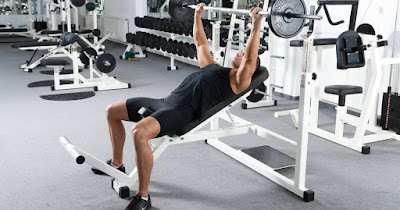 |
| Incline Press |
Target: Upper pectoralis major, front deltoids, triceps
Sets and Reps: 3–4 arrangements of 6–10 reps
Made for Mass: You won't push as a lot of weight with the slope press — most lifters discover they can deal with 70–80% of their seat press — however you'll be actuating and extending the pecs more in view of the calculated way of the free weight in connection to your ribcage. To additionally increment pec association, flare your elbows and carry the bar to a point higher on your sternum with every rep. To push greatest load for building mass, acquire from the seat press: Use a solid curve in your back with the goal that your upper back structures a steady establishment for the lift, and take a wide position, getting your glutes to give a progressively steady base. Lower the bar to your upper chest without letting it float out before you, and don't let your butt ascend off the seat.
Change the Technique: For greatest pectoral incitement, create consistent pressure in your pecs by utilizing a siphoning "cylinder" movement that holds back, around 3/4 of the best approach to lockout — don't press to full-arm augmentation.
3. Military Press:-
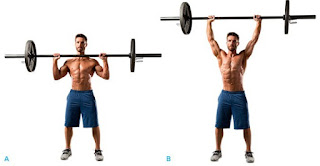 |
| Military Press |
Target: Anterior, center and back deltoids, triceps
Sets and Reps: 3–4 arrangements of 8–12 reps
Made for Mass: To assemble greatest mass with the military press, you'll have to do without the solace of your back-upheld situate and do it holding up. In case you're new to this no frills form (just called the "press" in quality circles), you'll be lifting less weight from the outset. However, you'll compensate for it by terminating each muscle fiber from your palms to your heels as you press the weight overhead. With an overhand hold somewhat outside shoulder width and a position marginally inside shoulder width, support your center and glutes to keep your spine from overextending. Press the hand weight straight upward with your upper arms in the "scapular plane" (elbows pointed forward at a 30-degree edge as opposed to flared to your sides). Lock the weight overhead and afterward return by bringing down the bar right to your upper chest.
Change the Technique: To all the more likely seclude your delts, attempt the behind-the-neck rendition. However, remember that squeezing from behind the head is tricky for some lifters, as it puts a lot of weight on the shoulder joint, AC joint and cervical spine if your shoulders aren't adequately adaptable and stable.
4. Weighted Dip:-
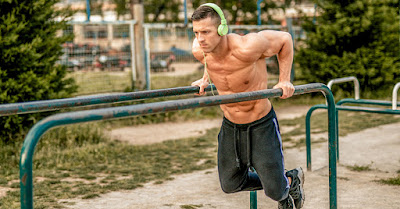 |
| Weighted Dip |
Target: Pectoralis major, front deltoids, triceps
Sets and Reps: 3–4 arrangements of 8–12 reps
Made for Mass: Once you can hit 10 reps of bodyweight dunks without enduring a breakdown in structure, it's an ideal opportunity to belt up. Balance a plate from a plunge belt — picking a weight that lets you get in any event eight reps — and locate a lot of plunging bars that lets you take a hold simply outside shoulder width. Focus your body with your arms bolted out and, without letting your elbows flare outward, lower yourself until your upper arms are parallel to the floor.
Change the Technique: If you can't get your hands on a plunging belt, you can suspend a free weight between your lower legs by bowing your knees and snaring it between crossed lower legs, or you can wrap chains over your neck Branch Warren–style. Simply realize that the chains, in spite of looking boss, will put more weight on your cervical spine. Likewise, while this form puts more accentuation on the triceps, by enabling your arms to flare out and raising your feet behind you — which drives your focal point of gravity forward — you'll all the more straightforwardly focus on the lower pecs and diminish triceps incitement.
5. Bent-Over Barbell Row:-
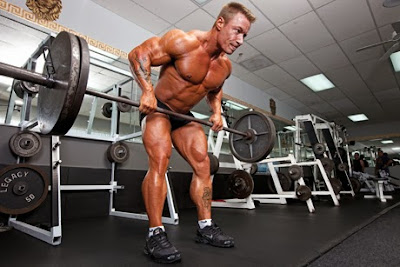 |
| Bent-Over Barbell Row |
Target: Pectoralis major, front deltoids, triceps
Sets and Reps: 3–4 arrangements of 8–12 reps
Made for Mass: Once you can hit 10 reps of bodyweight dunks without enduring a breakdown in structure, it's an ideal opportunity to belt up. Balance a plate from a plunge belt — picking a weight that lets you get in any event eight reps — and locate a lot of plunging bars that lets you take a hold simply outside shoulder width. Focus your body with your arms bolted out and, without letting your elbows flare outward, lower yourself until your upper arms are parallel to the floor.
Change the Technique: If you can't get your hands on a plunging belt, you can suspend a free weight between your lower legs by bowing your knees and snaring it between crossed lower legs, or you can wrap chains over your neck Branch Warren–style. Simply realize that the chains, in spite of looking boss, will put more weight on your cervical spine. Likewise, while this form puts more accentuation on the triceps, by enabling your arms to flare out and raising your feet behind you — which drives your focal point of gravity forward — you'll all the more straightforwardly focus on the lower pecs and diminish triceps incitement.
6. Weighted Chin-Up:-
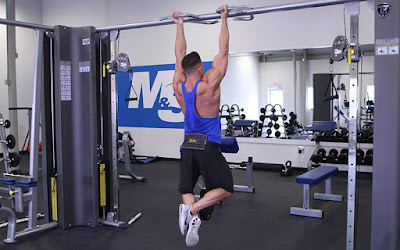 |
| Weighted Chin-Up |
Target: Latissimus dorsi, biceps
Sets and Reps: 3–4 arrangements of 6–10 reps
Made for Mass: Like the plunge, the jawline up is a tried and true mass developer. Be that as it may, to make it a mass-building beast keeping pace with the remainder of these consecrated developments, you'll have to man it up an indent utilizing your trusty plunge belt. Similarly as with the weighted plunge, drape at least one plates from a belt to drive disappointment between the 6th and tenth rep. Get the bar with a shoulder-width, supinated (underhand) grasp and lock your shoulders down and back to prevent them from shrugging upward in the base position. Prop your center to counteract spinal hyperextension, and force your body toward the bar until your chest contacts it.
Change the Technique: If a plunge belt isn't accessible, you can suspend a hand weight between your lower legs by snaring a free weight between crossed lower legs.
7. Squat:-
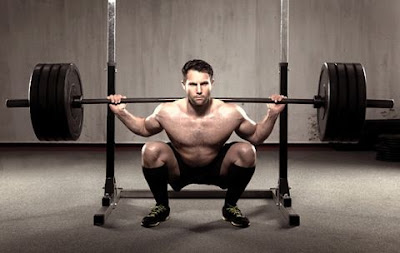 |
| Squat |
Target: Quadriceps, gluteus maximus, hamstrings, erector spinae
Sets and Reps: 3–4 arrangements of 6–10 reps
Made for Mass: Bodybuilders regularly support a limited position, which lets them center the squat's worry around their quads. In any case, to treat the squat like the mass-building stone monument it was intended to be, you'll have to move more weight by taking a position simply outside shoulder width. Numerous lifters locate that flaring their feet — and thighs once they're in the base position — to around a 30-degree point causes them "sit" between their legs as they lower themselves, yet position is explicit to your hip life systems. All through the lift, the free weight should remain focused over your feet. Start the development by breaking at your hips and knees. Keeping your chest up and your knees constrained outward to evade valgus breakdown, squat until your thighs are at any rate parallel to the ground, and climb by pushing through the whole foot. Abstain from floating forward or twisting around as you plummet — you ought to have enough weight on your heels that you can squirm your toes all through the lift.
Change the Technique: For greatest hamstrings and glute actuation, go underneath parallel. Lower leg portability might be an issue for some beneath the-wrinkle squatters, so consistently ensure you keep your chest up and abstain from adjusting your lower back, and don't let your knees float internal.
8. Front Squat:-
 |
| Front Squat |
Target: Quadriceps, gluteus maximus, hamstrings, erector spinae
Sets and Reps: 3–4 arrangements of 6–10 reps
Made for Mass: You'll be unable to push as a lot of weight with the front squat as you can with the bar on your back, yet the adjustment in bar position brings about an increasingly upstanding middle, which means your center muscles are staying at work past 40 hours to keep the bar voyaging straightforwardly over the focal point of each foot, and more accentuation is put on the quadriceps. And this additional muscle-fiber actuation implies — you got it — increasingly mass. To ace the front squat, take the equivalent outside-shoulder-width position as depicted for the squat. Handle the bar by putting your fingers somewhat more extensive than shoulder width, driving your elbows upward and laying the bar on your front delts near your neck. The more upstanding stance will put included accentuation upper-erector quality as you battle to keep your chest up, elbows high and knees out. Dive to either parallel or beneath parallel contingent upon your degree of portability.
Change the Technique: Since the Olympic-style front squat requires enormous wrist and elbow adaptability, numerous muscle heads lean toward the crossed-arms procedure, which includes laying the bar on the front delts near the neck, raising the elbows upward and snatching the bar in a befuddled "mummy" position.
9. Deadlift:-
 |
| Deadlift |
Targets: Latissimus dorsi, erector spinae, traps, rhomboids, lower arms, glutes, hamstrings, calves
Sets and Reps: 3–4 arrangements of 6–10 reps
Made for Mass: No adjustments are important to change the deadlift toward size — it's a characteristic brought into the world mass manufacturer. To hit the nail on the head, take a shoulder-width position with your feet pointing straight ahead and line the hand weight up about an inch away from your shins. Twist from your hips and enable your spine to bend as you handle the bar with a pronated hold. Ensure your shoulders are before the bar, which ought to stay in an immediate line between the focal point of your feet and your scapulae. At that point, with a firm grasp on the bar, twist your knees until your shins contact the bar and curve your spine enough that you'd have the option to peruse your shirt in the mirror. Abstain from endeavoring to "squat" the weight up — your hips ought to stay higher than your knees even in the base of the lift. Look down at a 45-degree edge to abstain from hyperextending your neck, and "pack your neck" by withdrawing your jawline. Increase current standards by pushing through your feet and crushing your glutes hard to lockout.Stand tall and afterward bring down the weight leveled out by sitting back, keeping a solid curve in your back, and keeping the bar exceptionally near your body. Keep your arms directly consistently and abstain from flexing the spine down low or hyperextending it up top.
Change the Technique: Many people arrive at a point wherein their pulling quality is constrained by their grasp quality. By then you can change to a stunned grasp by supinating one hand and pronating the other to frame an interlocking framework. Exchange your blended grasp between sets for balance.
10. Rack Pull:-
 |
| Rack Pull |
Targets: Latissimus dorsi, erector spinae, traps, rhomboids, lower arms, glutes, hamstrings, calves
Sets and Reps: 3–4 arrangements of 6–10 reps
Made for Mass: No adjustments are important to change the deadlift toward size — it's a characteristic brought into the world mass manufacturer. To hit the nail on the head, take a shoulder-width position with your feet pointing straight ahead and line the hand weight up about an inch away from your shins. Twist from your hips and enable your spine to bend as you handle the bar with a pronated hold. Ensure your shoulders are before the bar, which ought to stay in an immediate line between the focal point of your feet and your scapulae. At that point, with a firm grasp on the bar, twist your knees until your shins contact the bar and curve your spine enough that you'd have the option to peruse your shirt in the mirror. Abstain from endeavoring to "squat" the weight up — your hips ought to stay higher than your knees even in the base of the lift. Look down at a 45-degree edge to abstain from hyperextending your neck, and "pack your neck" by withdrawing your jawline. Increase current standards by pushing through your feet and crushing your glutes hard to lockout.Stand tall and afterward bring down the weight leveled out by sitting back, keeping a solid curve in your back, and keeping the bar exceptionally near your body. Keep your arms directly consistently and abstain from flexing the spine down low or hyperextending it up top.
Change the Technique: Many people arrive at a point wherein their pulling quality is constrained by their grasp quality. By then you can change to a stunned grasp by supinating one hand and pronating the other to frame an interlocking framework. Exchange your blended grasp between sets for balance.

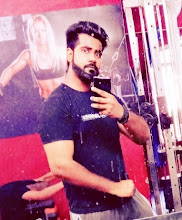



Excellent. Thanks for all your work in creating/sharing so much new material with us!
ReplyDeleteI'm looking forward to more.
Lifting Hooks
The blog is for fitness freaks who want personal training, coaching on fitness and consulting. The blog has hand full details on nutrition and workshops as same FitFlex.com.pk. You want to get a fit or healthy body? Buy your favorite protein and the reasonable gold standard whey protein price in Pakistan is available now in online store.
ReplyDelete